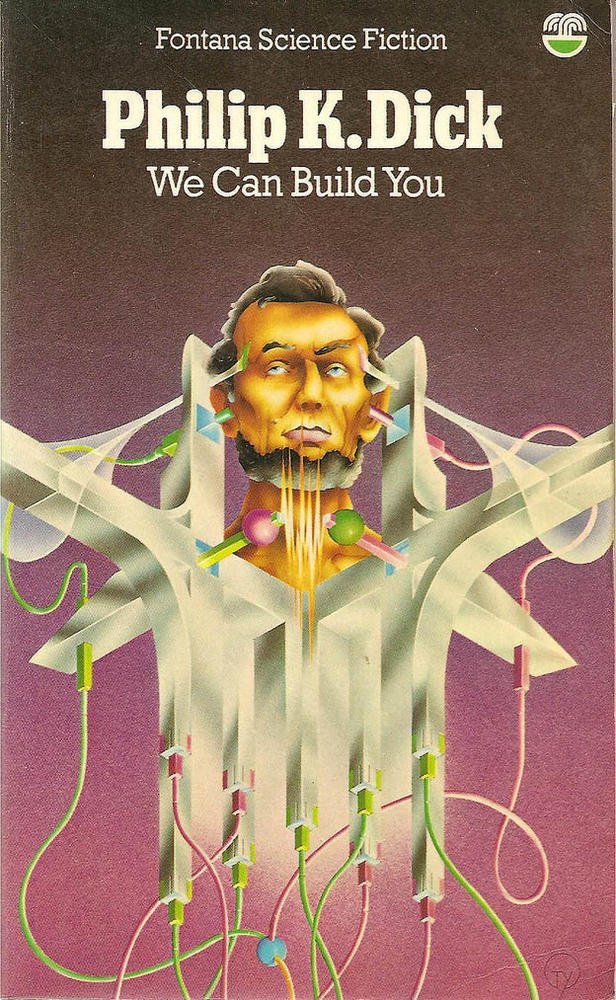In February 1974 something profound and inexplicable happened to author Philip K Dick that changed his life forever. Was it an illness, a psychotic reaction, or something truly mystical?
Today in pulp I look back at the exegesis of Philip K Dick...
Today in pulp I look back at the exegesis of Philip K Dick...

Philip K Dick was both prolific and influential. In his youth he came to the conclusion that, in a certain sense, the world is not entirely real and there is no way to confirm whether it is truly there. 

By the end of the 1960s Philip K Dick had published over 40 novels and stories, as well as winning the 1963 Hugo Award for The Man In The High Castle. But he still struggled financially. 

As well as money problems he had become a heavy amphetamine user. In 1972, after his fourth marriage failed and his home was burgled, he made his first suicide attempt. He later entered the X-Kalay rehab centre to recover. 

On 20 February 1974 Dick was at home recovering from dental surgery, which had involved sodium pentothal. He was in great pain and his wife ordered some strong painkillers to be delivered to their home. 

The painkillers were delivered by a woman wearing a gold necklace with a Christian fish symbol. On seeing this he was suddenly blinded by a flash of pink light and a series of powerful visions ensued. 

He later described this vision as anamnesis - "loss of forgetfulness." He immediately knew he and the delivery woman were both persecuted Christians in ancient Rome. Time was unreal, or rather it was a Platonic ideal. 

More visions happened in the following months: abstract patterns, philosophical ideas, sophisticated engineering blueprints. He felt he was actually living two simultaneous lives. In one he was Philip K Dick the author... 

In his other parallel life time had stopped in 70 A.D. and everything that happened afterwards was an illusion. The Roman Empire was alive under Richard Nixon and he was an undercover revolutionary. 

One of his visions told him his child had an undiagnosed life-threatening hernia, which turned out to be true. His night-time murmurings turned out to be Koine Greek. Whatever was happening, it wasn't easy to dismiss. 

Dick later describes the event as "an invasion of my mind by a transcendentally rational mind." The invader called Zebra, made more effective and rational decisions than he could, including sorting out his finances and royalties. 

Dick wrote a private journal - called Exegesis - from 1974 up to his death in 1982. In it he tried to make sense of the intense visions he had experienced. He made a further suicide attempt in 1976 when his visions ceased. 

He worked on many theories for his visionary experiences: God, the KGB, satellites, aliens, a telepathic first-century Christian called Thomas, the CIA, a version of himself from a different dimension, his twin sister in the spirit world... 

Most of Philip K Dick's later works explore the gnostic ideas and implications of his visions. VALIS - "Vast Active Living Intelligence System" - is part of his unfinished trilogy of books about what he believed he had discovered. 

In his Exegesis he wrote: "We appear to be memory coils... in a computer-like thinking system which, although we have correctly recorded and stored thousands of years of experiential information... there is a malfunction of memory retrieval." 

Whatever the cause, the experience seemed to make him more secure and happier in his later years. It didn't make sense, it couldn't perhaps be understood, but he felt a form of truth had been revealed to him, and that was enough. 

Philip K Dick passed away on 2 March 1982. His ashes were buried next to his twin sister Jane, who had died in infancy. Her tombstone had been inscribed with both of their names at the time of her death, 53 years earlier. 

Philip K Dick's later work can be an acquired taste, but if you understand the author's frame of mind at the time you can perhaps appreciate what he was trying to describe. It's unique and unsettling and thoroughly rewarding.
More stories another time...
More stories another time...

• • •
Missing some Tweet in this thread? You can try to
force a refresh























